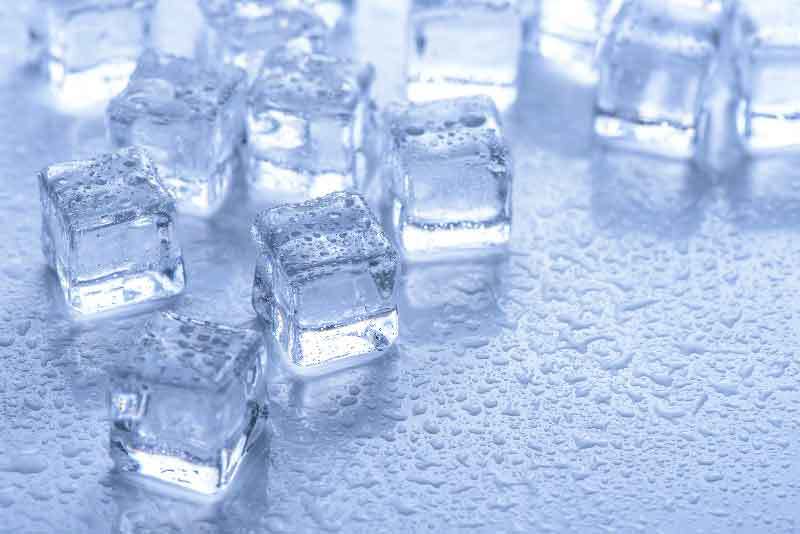Cold weather, dark nights. Even howling wind and rain. Winter can be tough, especially if you like to get outdoors for your fitness workouts.
We've all heard the phrase "Summer bodies are made in winter" and it's true. Health and fitness is a year-round journey and it gets tough. Tough to motivate yourself to get up and about when you'd rather stay indoors where it's warm and dry. Tough to keep pushing towards your goals when the workouts feel tougher in the cold.
More...
Winter can test even the most "hardcore" exercisers. If you prepare yourself, however, there's no reason why your fitness regime can't continue during the colder months.
Here are 9 quick tips that will help you stay on track until the weather brightens up again.
Warm-Up in Winter
Hardly ground-breaking, right?! Yes, the first tip sounds basic but don't be fooled by its simplicity.
No matter what the weather's like, a warm-up should always for part of your regular workout routine.
When it's colder outside though, your muscles can and joints can take longer to loosen off and start working efficiently. You'll want to make sure you keep your chance of injury as low as possible while also improving the benefits of your workout.
A dynamic warm-up, incorporating large movements of all the major joints, will get the blood flowing where it needs to. You'll start to feel warmer and your muscles will begin to feel less stiff.
Start your movements slow and gradually build the intensity until you're at your working range.
Layers, layers, layers

Multiple lighter layers of clothing are much more beneficial than one thick, warmer piece.
Once you start working out, your body will start generating its own heat. As a result, you might feel like it's much warmer than it actually is.
Being able to remove a layer or two will help keep you comfortable. Once you really start to sweat, you may begin to cool down again so just pop another layer back on, easy!
Having more layers of clothing will also help trap more air around your body, like insulation. You'll stay nice and cosy, no matter what the weather is doing around you.
Some added thoughts on the best way to layer up for your winter workout
Base Layer – Synthetic fabrics are generally best (see the problems with cotton clothing below). Perhaps even compression garments if you like them.
Middle Layer – Depending on how harsh the weather is, you might want a thicker material, like fleece, to trap in more heat. Otherwise a T-shirt or long-sleeved top might do.
Outer Layer – Something waterproof if it's raining, or just a windbreaker if it's a little gusty.
Think about your head too. If it's particularly cold you might like a hat or beanie. If it's raining, a baseball cap or snapback can help keep the rain off your face and out of your eyes.
Dry Winter Workout Clothes
The quickest way to feel cold and miserable? Get soaked to the skin and continue trudging through a tough workout in wet clothing.
Much like sweat's cooling effect on the skin, wet fabric will do the same. The water will conduct your body heat away to the outside air, leaving you feeling cold.
There are many cases where natural fibres are the best choice for comfort. Not when it comes to winter workouts in wet weather.
Avoid cotton if you can. It'll become water-logged, soaking up sweat and rain, holding in moisture and become heavy.
Synthetic fabrics like nylon, polyester and polypropylene blends are light and are designed to dry quickly.
Avoid cotton – it soaks up sweat and rain and holds in moisture. Try synthetic fibres like polyester, nylon, and polypropylene. These are light and are designed to dry quickly, wicking away moisture from your skin too.
Happy Hands and Feet

This is probably the most important tip for me. My hands get cold when I'm running, even in relatively mild weather. Cold hands and feet can begin to make you feel like your whole body is cold.
Ever felt too hot in bed and stick one leg out from under the covers? Same principle.
In cold weather, your body wants to keep the blood supply around your core, where your vital organs are.
When you exercise, blood needs to travel to the working muscles. As a result, your feet and hands are often left vulnerable, as blood flow is reduced at your extremities.
Consider wearing gloves to help your comfort levels during your winter workouts. Even if it's not particularly cold outside, you might still get some benefit.
Thick, warm socks will often help too.
Start the night before
Plans change, things come up.
As we all know, failing to prepare is preparing to fail.
Take 5 or 10 minutes each night to pack your gym bag and workout clothes ready for the next day.
When your alarm goes off and you're cosy in bed, it's one less excuse you'll have to snuggle back under the covers.
Likewise, if that work meeting runs on late, meaning your journey home is delayed you won't have to worry. You'll have your stuff ready to go with you just the same.
Have a Contingency Plan
Despite a strong will and the best-laid plans, always have a backup. Winter can be unpredictable and there might be unexpected challenges that come up. There's always a way around them though.
Get home from work a little later and it's now too dark? Can you alter your training route to somewhere that's more well-lit? Could you consider training during your lunch break to make the most of the daylight?
What if the rain's just too heavy? What about an indoor workout instead? Lift weights at the gym, or even just complete a bodyweight cardio circuit at home.
Struggling for motivation? Perhaps try a group fitness class or other activity. A little bit of variety can work wonders for your motivation and enjoyment levels.
READ ALSO: New to Group Fitness?
Recruit A Winter Workout Buddy
In all my years of training and coaching people, there's one thing that has a MASSIVE effect on motivation and results.
Accountability
The thought of going out in the cold and dark of winter to workout can be overwhelming.
It's easy to talk ourselves out of training or backing down on the intensity. If we have someone else to answer to, and they're relying on you to show up, then you will.
Find a friend to workout with. Ideally, someone with similar fitness goals to you and you can both boost each other. You may even find your workouts seem 'easier' when someone else is going through it too.
Call in the professionals
If all else fails, you might relish the opportunity to train with a local personal trainer. Accountability will go through the roof, plus you might also get a renewed focus for when the weather does improve.
Hydration, even in winter, is important

You might not realise it as much, but even in lower temperatures, your body will still lose fluids through sweat and breathing. Remaining properly hydrated is still important.
Compared to the summer months, you're less likely to feel as thirsty while working out in the cold. The amount of water you need will vary but ensure you have adequate supplies of water to keep you going.
